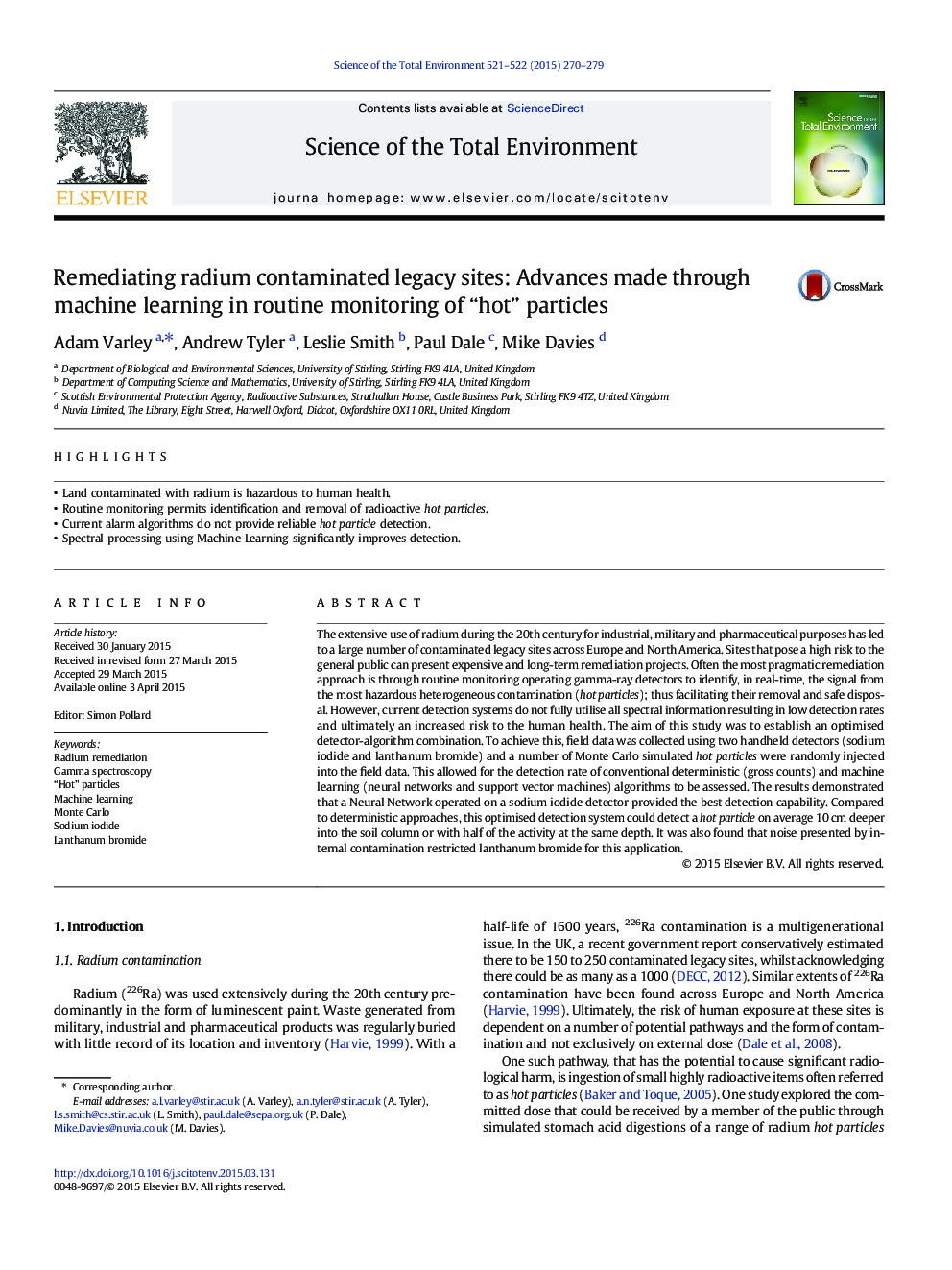| Article ID | Journal | Published Year | Pages | File Type |
|---|---|---|---|---|
| 6326602 | Science of The Total Environment | 2015 | 10 Pages |
Abstract
The extensive use of radium during the 20th century for industrial, military and pharmaceutical purposes has led to a large number of contaminated legacy sites across Europe and North America. Sites that pose a high risk to the general public can present expensive and long-term remediation projects. Often the most pragmatic remediation approach is through routine monitoring operating gamma-ray detectors to identify, in real-time, the signal from the most hazardous heterogeneous contamination (hot particles); thus facilitating their removal and safe disposal. However, current detection systems do not fully utilise all spectral information resulting in low detection rates and ultimately an increased risk to the human health. The aim of this study was to establish an optimised detector-algorithm combination. To achieve this, field data was collected using two handheld detectors (sodium iodide and lanthanum bromide) and a number of Monte Carlo simulated hot particles were randomly injected into the field data. This allowed for the detection rate of conventional deterministic (gross counts) and machine learning (neural networks and support vector machines) algorithms to be assessed. The results demonstrated that a Neural Network operated on a sodium iodide detector provided the best detection capability. Compared to deterministic approaches, this optimised detection system could detect a hot particle on average 10Â cm deeper into the soil column or with half of the activity at the same depth. It was also found that noise presented by internal contamination restricted lanthanum bromide for this application.
Related Topics
Life Sciences
Environmental Science
Environmental Chemistry
Authors
Adam Varley, Andrew Tyler, Leslie Smith, Paul Dale, Mike Davies,
